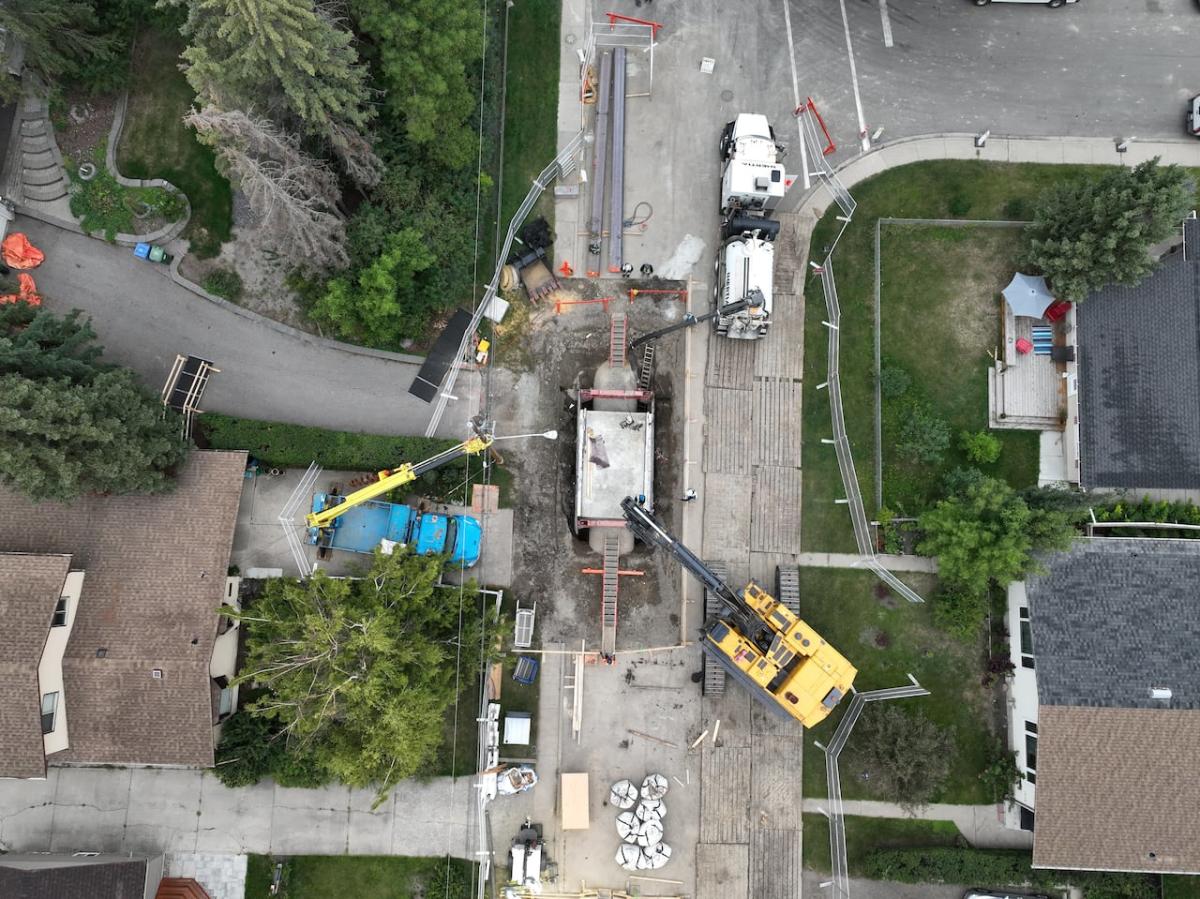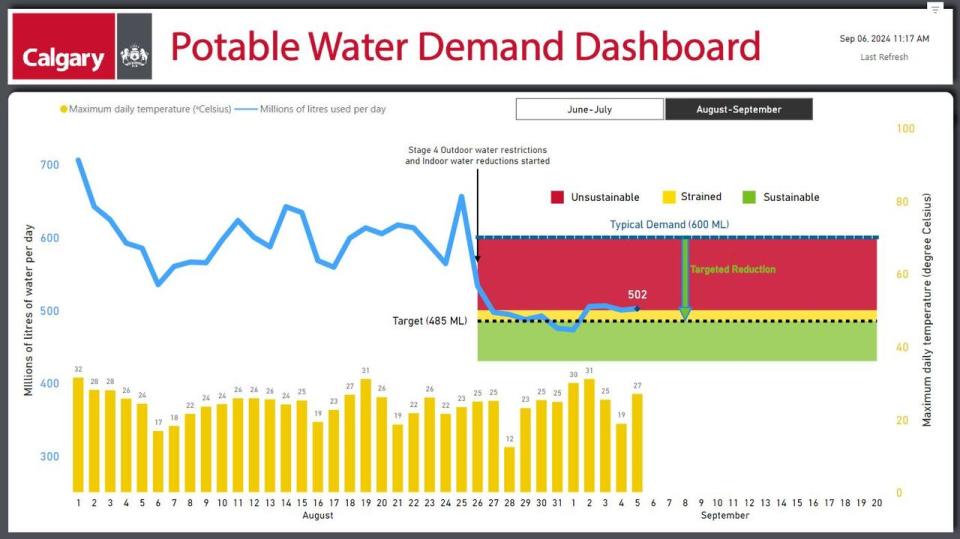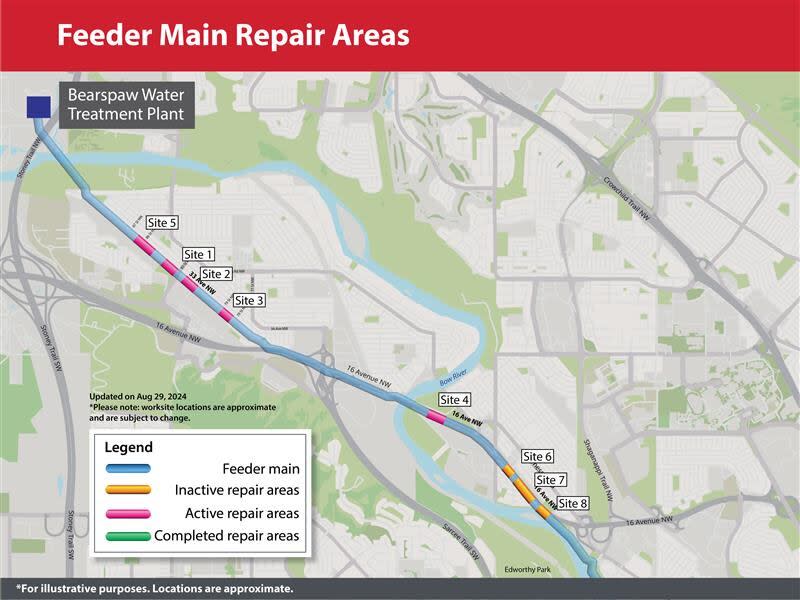


Calgary officials continued to encourage citizens to cut back on their water use Friday, saying their efforts have the city to nearly 80 per cent of the way to achieving daily targets.
“Skip two flushes and we have reached our goal,” said director of capital priorities and investment Francois Bouchart at an afternoon news conference.
Calgarians used 502 million litres of water on Thursday, up slightly from Wednesday’s 500 million litres. Demand has remained at or above 500 million litres per day since Labour Day.
Earlier this week, the city changed the way water flows through its distribution system, allowing for an additional 35 million litres of use each day, and changing the targeted daily use limit from 450 million litres to 485 million litres.
However, officials say the city’s water system cannot sustainably handle upwards of 500 million litres of use every day and continuing to do so puts the city’s pipes in jeopardy.

The city’s Potable Water Demand Dashboard. Demand has remained at or above 500 million litres per day since Labour Day. (City of Calgary)
Bouchart said after some discussions Thursday, large commercial customers in the city will reduce their potable water use by three million litres per day beginning in the next few days.
Starting Saturday, the city is also turning off access to showers at city-operated arenas, athletic parks and the Calgary Soccer Centre in another bid to save water.
It’s also planning to use non-potable water to flood the ice at city arenas as well as water from outside the city’s system to maintain the ice at Murray Copot Arena.
Calgary has been under Stage 4 outdoor water use restrictions since August 26. This means no potable water use is permitted outside the home.
For more details on what the city says is and is not allowed under Stage 4 restrictions, visit its website.
With hot weather in the forecast, Bouchart said he understands the desire to water plants and keep gardens thriving.
Those who wish to continue to water their trees, lawns and gardens during Stage 4 restrictions should use non-potable water sources only, such as rain barrels, grey water or river water from one of three pick up stations from 9 a.m. to 7 p.m daily.
Bouchart acknowledged that bylaw officers are still following up on complaints about the misuse of water outdoors.
“We understand that it can be frustrating when you’re doing your part and see others who are not,” he said.
“Calgarians who are seeing outdoor water misuse can continue to provide information related to these instances through the Calgary 311 app or calgary.ca/311.”
Construction on parts of the broken feeder main remain on schedule and Bouchart reiterated there are about two and a half weeks left until the pipe comes back online and restrictions can be lifted.


A portion of 16th Avenue N.W. in Montgomery, from 46th Street to 41st Street, was closed for water pipe repairs on Thursday, with traffic being diverted onto Bowness Road. Repair work along 33rd Avenue N.W. and in Shouldice Park remains on schedule, the city says. (City of Calgary)
“We have now poured concrete at six of the 12 repair segments, and are continuing concrete curing. Forms at five of the repair segments have now been removed,” he said.
“This means that some of our repair segments at these sites are in the final stages of repair as work progresses.”
Excavations continue at three repair segments at Site 5, which is at 33rd Avenue N.W. and 86th Street N.W.
A stretch of 16th Avenue N.W. in Montgomery was closed for repairs Thursday from 46th Street to 41st Street. Traffic is being diverted onto Bowness Road, and businesses in the area can still be accessed, Bouchart said.
Four valves along the feeder main are also undergoing maintenance since the pipe is exposed. Bouchart said this work does not impact the overall repair timeline.
Asked where in the city water use is more egregious, Bouchart says it’s not about pitting communities or parts of the city against each other.
“We have many customers that we’ve talked to that are achieving 25 per cent or better in terms of water savings, especially those companies where water is an important cost to their production.”